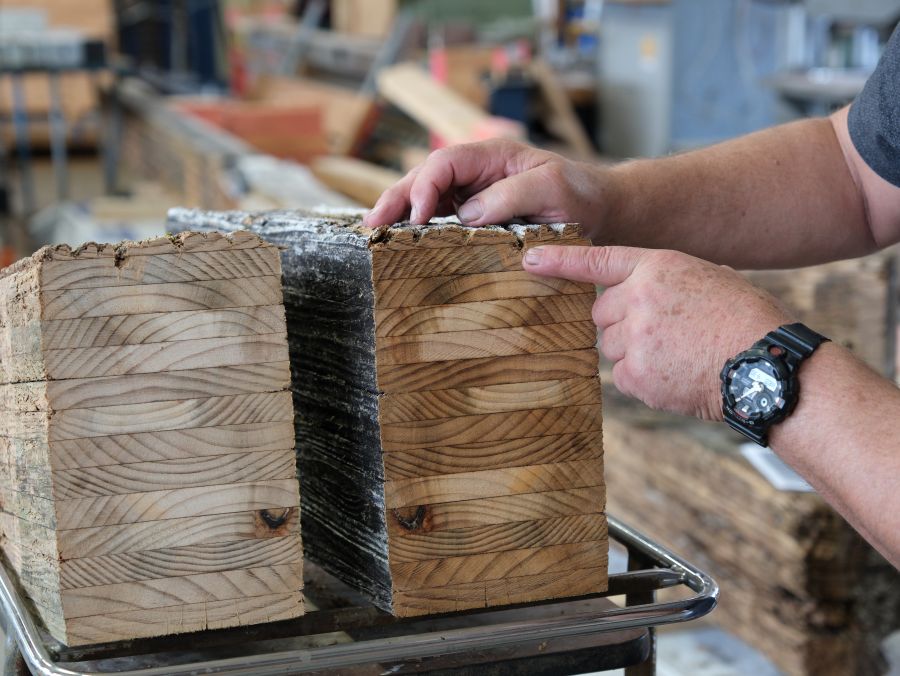Properly treated radiata pine: Built to last

A well-treated radiata pine can stand the test of time – and Scion has the evidence to prove it.
Transpower recently asked the Crown Research Institute to conduct a detailed analysis on a laminated radiata pine cross-arm installed on the Desert Rd in 1965 as part of the New Zealand Electricity Department's transmission network.
The cross-arm had been lying on the ground on on dunnage (loose wood, matting, or similar material) 100mm off the ground, for over 15 years. It had undergone regular assessments until 1990 as part of Scion’s long-term service test programme. This recent analysis aimed to assess the cross-arm’s condition after several decades of service and help predict the remaining service life of similar units still in service.
Scion’s timber durability researchers conducted a visual and microscopic inspection, which revealed localised decay – mainly due to brown rot fungi – where the cross-arm had been in contact with the ground, At this site, the effective cross-sectional dimensions were reduced by 10–15 percent. However, the remainder of the cross-arm showed no significant signs of deterioration. Structural testing showed the cross-arm retained an average bending strength (MoR1) of 22 megapascals (MPa), meeting the characteristic strength requirement for GL10-grade2 laminated timber.
After removing just a few millimetres from the surface, Scion’s team found the underlying timber was still in excellent condition – a remarkable discovery given the cross-arm’s age.
Scion timber durability expert Dr Tripti Singh says the cross-arm performed as properly treated timber should. “While preservative penetration was likely limited – due to the impermeability at the glue lines and treatment after fabrication– the timber still demonstrated outstanding long-term durability.”
“This case is a testament to the effectiveness of proper timber treatment and thoughtful engineering, showing that radiata pine, when handled correctly, can deliver exceptional performance for decades.”
1 MoR (Modulus of Rupture) measures a piece of wood's bending strength – how much stress it can handle before it snaps when bent. The higher the MoR value, the stronger the wood.
2 GL10 is a mechanical grade of glue-laminated timber (glulam), a manufactured structural timber product made by gluing together smaller pieces of stress-graded and seasoned timber.
About the cross-arm
Measuring 8.5m long, the cross-arms were made from 14 horizontally laminated pieces of 200 x 25mm radiata pine and scarf jointed3 to form a finished cross-section of 270 x 165 mm. They were bolted onto pairs of copper chrome arsenate (CCA) treated radiata pine poles, creating H-frame structures. Each cross-arm extended 1.35m beyond the poles at either end, supporting three 110kV lines — one line at each end and one centred between them.
Manufactured at the Waipa State Mill in Rotorua, the timber underwent kiln drying and dressing before lamination. The adhesive used was Aerodux 185, a resorcinol formaldehyde exterior glue, cured at approximately 32°C. Following lamination, the cross-arms were treated using the Reuping (empty cell) process with a 5% pentachlorophenol (PcP) solution in Mobil No. 5 fuel oil, achieving a net preservative retention of 133 kg/m³.
3Scarf jointing is a technique that joins two pieces of wood end-to-end. It involves cutting angled or notched ends on each piece that interlock, providing a larger surface area for glue and further reinforcement.
